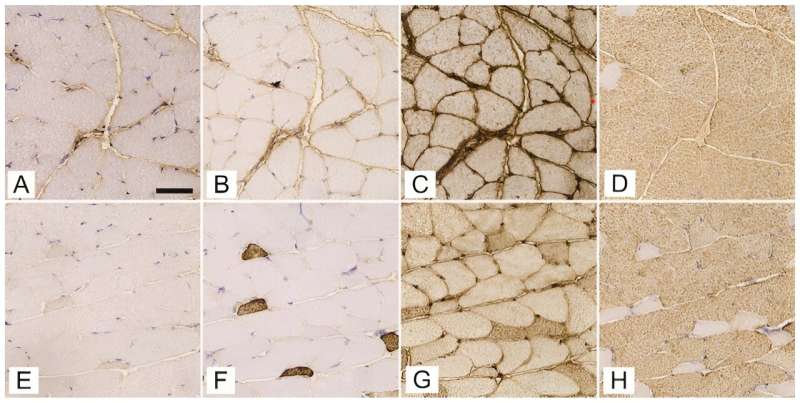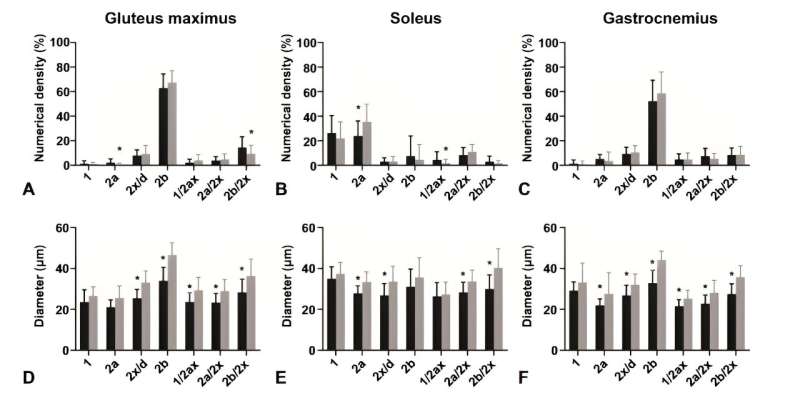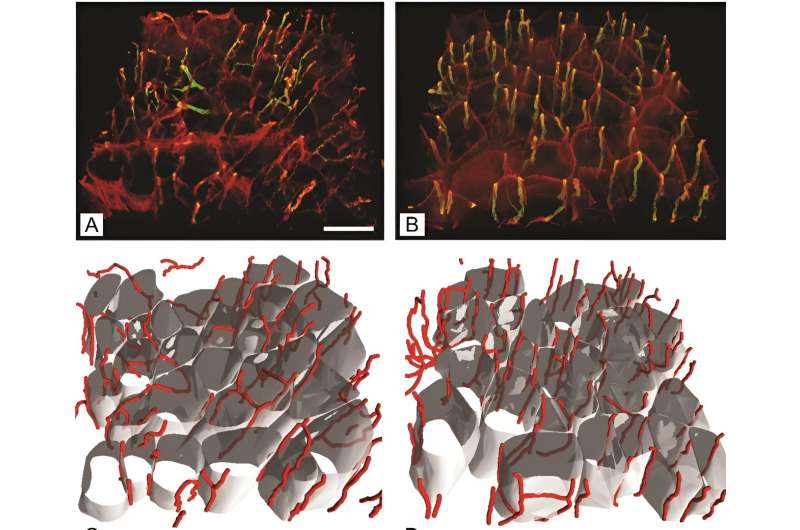Ryan Palmer had a tough week. On Monday, the 26-year-old job battled squat presses and ring dips. Tuesday, a clean and jerk set where he squeezed out 30 reps with 135 pounds. The following day, even though his muscles were still aching, he performed a total of 150 pull-ups and 150 burpees.
Palmer took a break from exercise on Thursday, but the next morning he went for a long bike ride. The following day his arms were uncharacteristically sore and swollen, his urine the color of black tea that had been seeping for hours. Instead of suiting up in workout gear on Sunday, he found himself in a hospital gown hooked up to an IV drip that flushed his kidneys with more than nine liters of saline. As his creatine kinase levels—the amount of muscle protein broken down poisoning his blood stream— declined at the pace of a snail, he pulled out his phone to send a tweet to his fellow athletes. With one flash of the camera, Palmer revealed the frightening results of a kidney test, and offered a simple caption: “Uncle Rhabdo, is that you?”
“Normal people don’t get it. It’s like being in the mafia. You can’t understand what it’s like unless you’re on the inside.”
33-year-old Jennifer Wielgus, who’s been doing CrossFit in Philadelphia for about a year.
The Evolution of Exercise
A little more than a year ago, I pulled up to a garage one evening ready to get my ass kicked. I wanted to try a CrossFit workout. I’d heard the rumors. I knew what was coming was probably more than I could handle—and that not even my athletic background as a gymnast, weightlifter, running back or point guard would prepare me. So, I ate a light dinner that wouldn’t taste horrible if I ended up hurling it onto my sneakers after overworking myself. And I sucked up my fear.
When I arrived, nothing seemed too intimidating except for the big clock with red numbers. It was those numbers that would define my ability to survive. The workout started well, but right around my fifth set of squats, when the weight became a little too heavy and my form began to falter, I put the bar down. But the clock did not approve.
2:37….2:36…2:35…
While the athletes around me kept moving, bewildered by my inaction, I knew my time was up. I could feel a twinge in my spine reminiscent of an old stress fracture. Everything—aside from the environment—told me to stop.
“Pick it up! Finish it out! Two minutes! As many rounds, let’s go!” The coach’s hands clapped together, lips pursed tightly in frustration for the mental and physical break I gave myself. So, I picked up the bar. And, moving as slowly as possible with as best form one can do when they’re tired and hurting, I finished it out. That night I needed a double dose of ibuprofen and an ice bath.
That was my first experience with CrossFit, a workout methodology created by former gymnast Greg Glassman in 2001. CrossFit consists of a stew of exercise variety: Olympic-like lifts, cardio training and other seemingly basic, but multi-joint movements (like box jumps, pullups and jumping rope) are combined in each class. CrossFit aims to “forge a broad, general and inclusive fitness,” according to the brand’s guidebook. The workout phenomenon has been steadily growing for a decade, and according to CrossFit headquarters, there are more than 3,000 CrossFit affiliated gyms worldwide, with 332 in California alone.
Every day, thousands of CrossFit athletes faithfully arrive at their respective gyms: warehouses filled with boxes, ropes, Olympic rings, kettlebells and a never-never-quit atmosphere. The defining characteristic of CrossFit is the intensity. The programs are hard as hell. Its “prescription,” as the guide states, is for “constantly varied, high-intensity, functional movements that will optimize physical competence in ten physical domains: cardiovascular and respiratory endurance, stamina, strength, flexibility, power, speed, coordination, agility, balance and accuracy.”
The key to the high-voltage workouts is a digital clock that holds prime real estate in most CrossFit facilities. Most of the workouts are time-based, meaning you don’t stop until the clock hits zero. Even as your muscles fail and your mind weakens, coaches and fellow gym goers push each member to completion.
Peter Villahoz, a 30-year-old New York Police Department Officer from East Meadow, NY, says a lot of his close friends are from CrossFit, and that they are there to push each other.
“If I finish first, I wait till these guys are done and I motivate them,” he says.
The camaraderie in the gym is nothing short of contagious. As such, the program has earned its skeptics and, of course, true believers.
“As an adult competitive athlete, there’s nothing else like this. You get that adrenaline rush that you got from being in sports in high school,” says 33-year-old Jennifer Wielgus, who’s been doing CrossFit in Philadelphia for about a year.
That rush and love of the gym is far from a bad thing, but the no-quit atmosphere has generated questions. And the mob mentality has taken the healthiest of behaviors and turned it into a growing danger.
The Dark Side
Uncle Rhabdo represents a character in the CrossFit community and is short for rhabdomyolysis, a kidney condition most commonly induced by excessive exercise, according to Heather Gillespie, a sports medicine physician from UCLA. The potentially life-threatening state, which can also be caused by underlying genetics, occurs when muscle breaks down and myoglobin, the biproduct of muscle fibers, is released into the blood stream, essentially clogging up the kidneys and poisoning them.
“If you’re dehydrated, which sort of goes along with rhabdo, you can’t clear these toxins, the kidney can’t filter the byproduct,” Gillespie says. It can lead to kidney failure and electrolyte imbalances that can ultimately affect your heart.
Uncle Rhabdo was originally invented to shed light on “the inappropriate use of intensity,” according to CrossFit’s Training Guide. The haunting image of Uncle Rhabdo is a cartoon of a blue-haired-red-nosed clown with face paint, panting from exhaustion with organs and blood spilling from its body, a set of weights in the background.
Some in CrossFit use these clowns as a humorous way to prove that they’ve worked hard. But problems arise when CrossFit athletes and their trainers simply don’t know when—or choose not—to pull the plug.
“I do give them a little sticker [if they puke],” says Hollis Molloy, a trainer at CrossFit Santa Cruz, one of the first CrossFit gyms in the country. “Back in the day, we used to give them shirts and the availability of the shirt ran out.”
If most gyms struggle to have their patrons work hard enough, CrossFit gyms struggle on the opposite end of the spectrum. Searching for the words “pain” and “CrossFit” on Twitter yields hundreds of results, nearly every one praising the sting the workout provides. “There’s pushing an athlete to the point of discomfort that is challenging,” says Joe Dowdell, founder and CEO of Peak Performance in New York City. “But then we pull the reigns back. Vomiting is a sign that you’ve hit a point when it’s just too much.”
“CrossFitters put up with burning muscles and overall strain so they’re used to ‘bring it on, gimme more gimme more.’ It gets hard to say oh, that’s pain, I need to stop” says David Geier, Jr., an orthopedic surgeon and the director of sports medicine at the Medical University of South Carolina. “I think the benefits of CrossFit outweigh the risks—but the risks are real.”
While all exercise can create injury, Geier sees more injuries with CrossFit because of the high-speed, high-impact approach. Certain exercises implemented by CrossFit (Olympic lifts, specifically) are meant to be done in moderation. But CrossFit preaches pushing to the edge of every set, every rep, until there’s nothing left in the tank. And while training to muscular failure is notoriously debatable, one thing is certain: Regularly pushing your body to failure can lead to serious health risks, like rhabdomyolysis.
“I have always taken the stance that training to failure causes useless fatigue,” says Mark Peterson, an exercise physiologist from the University of Michigan’s department of physical medicine. “Whereas fatigue is a normal side effect of certain types of metabolic training, I do not believe it has a time or place in training for strength and power.”
The real danger is to new athletes, like those who flock to the thousands of CrossFit facilities looking for a great workout. Word of mouth is powerful in the CrossFit community, and maybe the most dangerous element. While the workouts can be performed by beginners, their immature muscles can’t tell the difference between training to failure and simply getting a good workout. In fact, most beginners don’t know when “too much is too much” and don’t understand the unique demand of an exercise session, says Eric Cressey, C.S.C.S., a shoulder and injury prevention expert and owner of Cressey Performance in Hudson, Mass.
Since many explosive movements require technical skill, he says, it is not advisable for Olympic lifts be completed in a fatigued state. CrossFit, and other popular workout schemes like bootcamps, rely on training to excessive exhaustion and failure, and thereby create an artificial perception of effectiveness. “These people might be doing a crazy workout and feel great because their endorphins are flowing, but then they wake up with their shoulder pounding with pain,” Cressey says.
His biggest concern is the technique that goes along with the workout. “When you see a 20-minute circuit of really ugly cleans and ring dips, those are exercises that don’t jive well,” he says.
The Fitness Solution?
This much is certain: When done correctly, CrossFit is not inherently bad or ineffective. Like other training methodologies before it, CrossFit is a form of high intensity exercise, an efficient model of exercise that has helped many people lose weight while improving strength and endurance. But due to its extensive popularity, many CrossFit gyms have diluted the system. Just as some first-time CrossFit athletes rush into overdoing exercises in a fatigued state and, thus, falter in form, CrossFit coaches and affiliates are rushing into setting up CrossFit gyms and are, thus, faltering in form.
The problems stem from inexperienced trainers. CrossFit level-1 trainers are certified after completing a two-day seminar and 50-multiple-choice-question exam. That’s all you need to open up a CrossFit gym and start training as many athletes as you want.
Zach Even-Esh, a CrossFit trainer at New Jersey’s Underground Strength Coach, says the trainers at level-1 are just scratching the tip of the iceberg. “They tell you at level-1 that this is an introduction to understanding the basis of what CrossFit is about and that you need to take it to the next level,” he says. But the reality is, someone with two days of education could be leading your next CrossFit class.
That’s not to say there aren’t well-experienced trainers coaching CrossFit across the country, but with a certification and affiliation so simple to attain, the program’s becoming diluted with inexperienced trainers who are hurting people. Cressey suggests those who want to be trainers should wait one year before getting a certification. “If you have it without any experience, it makes you a liability, not a professional,” he says.
The real question is: Can the growing CrossFit industry slow down to make sure its trainers are adequately prepared to train their clients? According to CrossFit headquarters, 150 applications arrive every month, which amounts to about five CrossFit affiliated gyms per day, assuming all applications are accepted. To put in perspective, in 2006, Starbucks set up an average of six stores per day.
CrossFit trainers and affiliates simply sign up to affiliate after receiving their level-1 certification and pay a monthly fee from then on out. There are never calls from headquarters pushing for further education or refresher courses.
“It does hurt the community because some people don’t go out and educate themselves,” Even-Esh says. And there is no lack of furthering education in the CrossFit community. The program offers level-2 training and specialty seminars in areas like kettelbell, mobility, power lifting, running and more. The classes are offered all over the country; CrossFit comes to the coaches, making it overly accessible. Even-Esh says he thinks CrossFit headquarters should even go as far as requiring coaches to get a specialty certification every once in a while to keep their affiliation.
The presiding hope among the CrossFit community is that this exercise movement can help reverse the growing obesity trend by creating a more active society. “I remember in the early days, Greg [Glassman] saying that CrossFit athletes aren’t found, they’re made,” says CrossFit Santa Cruz’s Molloy. And while CrossFit motivates its followers to exercise, the growing fear is that the current model and lack of monitoring is more likely to build broken bodies than create a healthier nation.
Source: http://www.livestrong.com
44.276672
-85.874794










